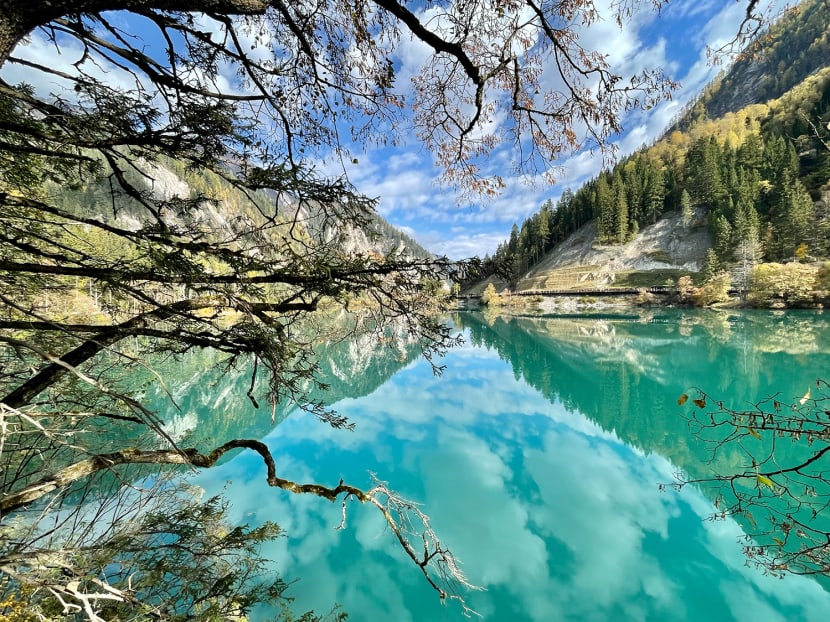
Exploring Jiuzhaigou National Park: A Symphony of Nature's Colors
Nestled within the embrace of the Min Mountains in northern Sichuan, China, lies a realm of unparalleled beauty and serenity—Jiuzhaigou National Park. Designated a UNESCO World Heritage Site in 1992 and a World Biosphere Reserve in 1997, Jiuzhaigou (meaning "Nine Village Valley") captivates the soul with its breathtaking landscapes, vibrant hues, and rich biodiversity.
What Makes Jiuzhaigou National Park So Popular?
Jiuzhaigou's allure stems from a harmonious blend of natural wonders, each element contributing to its captivating charm.
1. Multicolored Lakes: Jewels of the Valley
Jiuzhaigou is renowned for its dazzling array of alpine lakes, locally called "Haizi." These bodies of water, numbering over 100, are renowned for their mesmerizing colors, which shift with the changing light and mineral content of the water.
| Lake Name | Distinctive Feature | Image |
|---|---|---|
| Five Flower Lake (Wuhua Hai) | Considered the most spectacular lake in Jiuzhaigou, Five Flower Lake boasts a vibrant spectrum of colors caused by ancient fallen tree trunks lying submerged beneath its crystal-clear surface. |  |
| Long Lake (Chang Hai) | The largest and highest lake in Jiuzhaigou, Long Lake is known for its serene beauty and the legend of a dragon residing within its depths. |  |
| Mirror Lake (Jing Hai) | Famed for its remarkably still waters, Mirror Lake perfectly reflects the surrounding mountains and sky, creating a surreal and breathtaking spectacle. |  |
The captivating hues of Jiuzhaigou's lakes result from a fascinating interplay of factors:
- Calcium Carbonate Rich Water: The water, originating from glaciers and underground springs, flows over layers of travertine, a form of limestone. This process imbues the water with a high concentration of calcium carbonate.
- Light Diffraction: When sunlight strikes the calcium carbonate particles suspended in the water, it undergoes diffraction, scattering light rays of different wavelengths. This scattering effect gives the lakes their vibrant shades of blue, green, and turquoise.
- Algae and Aquatic Plants: The presence of various algae and aquatic plant species further contributes to the kaleidoscope of colors, adding emerald, jade, and even reddish hues to the lakes.
2. Cascading Waterfalls: Nature's Symphony of Sound
Jiuzhaigou boasts an array of stunning waterfalls, each a testament to the dynamic forces of nature. The waterfalls, ranging in size and power, add a mesmerizing auditory dimension to the park's ambiance.
| Waterfall Name | Distinctive Feature | Image |
|---|---|---|
| Nuorilang Waterfall (Nuorilang Pubu) | The widest waterfall in China, Nuorilang Waterfall is a sight to behold. The water plunges over a cliff, creating a thunderous roar and a mesmerizing curtain of mist. | .jpg) |
| Pearl Shoal Waterfall (Zhenzhu Tan Pubu) | Resembling a cascade of pearls tumbling down a series of steps, Pearl Shoal Waterfall derives its name from the way the water splashes over the rocks, creating a sparkling effect. |  |
3. Pristine Forests: A Tapestry of Green
Lush forests cloak the mountainsides of Jiuzhaigou, creating a tapestry of vibrant green hues. The forests are home to a diverse range of plant and animal life, showcasing the region's rich biodiversity.
- Vertical Forest Zones: Due to the park's varying altitudes, Jiuzhaigou boasts distinct vertical forest zones, ranging from mixed broadleaf and coniferous forests at lower elevations to subalpine coniferous forests and alpine meadows higher up.
- Autumn Splendor: As autumn descends upon Jiuzhaigou, the forests transform into a kaleidoscope of color. The leaves of deciduous trees, such as maples and birches, explode into brilliant hues of red, orange, and yellow, creating breathtaking vistas.
4. Cultural Significance: The Legend of the Nine Villages
The name "Jiuzhaigou" translates to "Nine Village Valley," referencing the nine Tibetan villages historically scattered throughout the region. The indigenous Tibetan people have inhabited this area for centuries, and their culture is deeply intertwined with the natural wonders of the park.
- Traditional Villages: Several of these villages, such as Heye, Shuzheng, and Zechawa, remain inhabited, offering visitors a glimpse into the traditional Tibetan way of life.
- Religious Sites: Buddhist temples and monasteries dot the landscape, serving as places of worship and cultural preservation.
5. Accessibility and Infrastructure
Despite its remote location, Jiuzhaigou is remarkably accessible to visitors. Well-maintained boardwalks and trails wind through the park, making it easy to explore the lakes, waterfalls, and forests. Shuttle buses provide convenient transportation between major attractions, allowing visitors to immerse themselves in the natural beauty without the hassle of navigating difficult terrain.
FAQs:
Why is Jiuzhaigou a UNESCO World Heritage Site?
Jiuzhaigou was inscribed as a UNESCO World Heritage Site due to its exceptional natural beauty, characterized by its spectacular waterfalls, snow-capped peaks, colorful lakes, and diverse forests. The park also harbors a rich biodiversity, including numerous endangered plant and animal species.
What is the best time to visit Jiuzhaigou?
While Jiuzhaigou is captivating year-round, the optimal time to visit is during autumn (September-October) when the leaves of deciduous trees transform into a vibrant tapestry of red, orange, and yellow, creating breathtaking contrasts against the turquoise lakes and evergreen forests.
Are there any accommodations available inside Jiuzhaigou National Park?
There are limited accommodation options available inside the park, primarily consisting of guesthouses and hotels located in the villages within the park's boundaries. It's advisable to book accommodations well in advance, especially during peak tourist seasons.
In conclusion, Jiuzhaigou National Park stands as a testament to the unparalleled artistry of nature. Its captivating blend of colorful lakes, cascading waterfalls, pristine forests, and cultural significance creates an experience that lingers in the hearts and minds of all who have the privilege to witness its splendor.